I chose my sit-spot because I wanted to sit by the creek where I thought there might be some interesting interactions among organisms. My sit-spot was more secluded from the road than other parts of the creek and had a nice patch of short grass for me to sit on. I also noticed many fish when I first checked out the spot, so I knew that there would at least be one interesting thing to watch. Immediately when I sat down, I was hit with an extremely overpowering grass smell that even masked the smell of the creek.
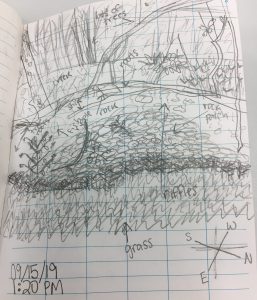
Right away, I observed that there was a section of rocks that were sitting above the water. I am curious to know how these rocks formed a little platform between the water and the bank. There were riffles in the creek as the water ran over rocks and branches. The land on the other side of the creek was a lot higher than the side that I was sitting on. The other side had many different roots coming out of the edge of the bank, which had a very abrupt drop-off point. Among these roots were very large tree roots.

Most of the plants were very green, but there were some leaves on trees that had turned yellow or brown. There were also some brown leaves that had fallen from the trees and were laying on the grass. I also saw a few plants of a species that I did not recognize that were growing out of the platform of rocks. These plants were leafy and green, and they had green spheres hanging from them. The spheres were not perfectly round. They were bumpy and came to a point at the bottom. It was a very strange looking plant that I do not think I have ever seen before.
Sitting in my sit-spot made me realize that there really are so many different plant species, and I am unable to identify any of them. I would like to become more familiar with plants and better at distinguishing between them.
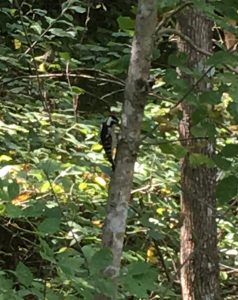 I heard many birds and insects. The cicadas had been chirping the entire time, and I had repeatedly heard one bird that sounded like a dog’s squeaky toy. I saw many butterflies and dragonflies flying around me. I also saw and heard a woodpecker pecking at a tree. The tree was very tall and thin, and the woodpecker kept moving up the tree, continuing to peck as it went. When I was watching this, I realized that even though I have seen woodpeckers do this many times, I don’t actually know what purpose it serves. I also wonder how they are able to hold onto the trunk of the tree while pecking at it so furiously. I saw many small fish swimming together in groups in the creek. Every now and then I would hear a “plop” because the fish were jumping in and out of the water. The fish also created ripples as they swam up to the surface of the water.
I heard many birds and insects. The cicadas had been chirping the entire time, and I had repeatedly heard one bird that sounded like a dog’s squeaky toy. I saw many butterflies and dragonflies flying around me. I also saw and heard a woodpecker pecking at a tree. The tree was very tall and thin, and the woodpecker kept moving up the tree, continuing to peck as it went. When I was watching this, I realized that even though I have seen woodpeckers do this many times, I don’t actually know what purpose it serves. I also wonder how they are able to hold onto the trunk of the tree while pecking at it so furiously. I saw many small fish swimming together in groups in the creek. Every now and then I would hear a “plop” because the fish were jumping in and out of the water. The fish also created ripples as they swam up to the surface of the water.
Most experiences with the animals were pleasant, distant observations, however I did get to get up close and personal with a stink bug when it flew directly into my face before falling into my hair and refusing to let go. I carefully untangled it from my hair, trying not to threaten the bug, so that it wouldn’t release its stink.
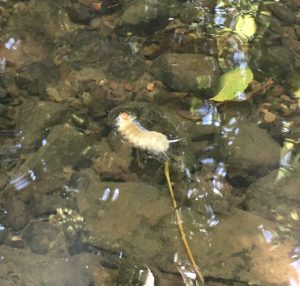
The most exciting part of my observations was when I saw something small moving on the top of the water in the creek. As I got closer, I realized that it was a fuzzy yellow caterpillar that was swimming on the top of the water. I had no idea that they could do that! The caterpillar was wiggling its body back and forth to glide across the water’s surface. I am so curious to know how it was able to do this, and I would love to find out more. I studied the caterpillar as it moved down the creek and was able to identify that it was fuzzy and yellow with a red face and what looked like two tails. With these traits (and a quick google search), I was able to identify that this caterpillar was a sycamore tussock moth caterpillar (Halysidota harrisii). This makes sense since there are so many sycamore trees surrounding the creek. I was able to take some photos and a video, although none of them were as good as I had hoped they would be.
Link to video of caterpillar swimming.

For the rest of the course, I have decided to follow the tall green plant to my left that was covered with ants on the bottoms of its leaves. Some of the leaves were brown and very droopy, but most of them were intact.
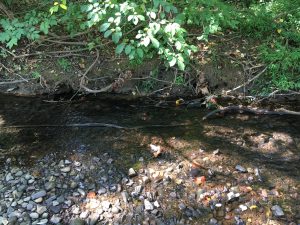
I am also going to follow the long stick that was laying in the creek. Some of the stick was not completely submerged, so it created riffles in the water.
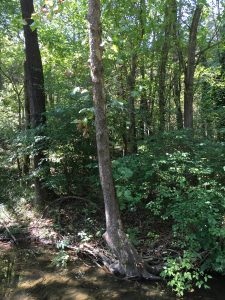
Lastly, I am going to follow the large tree to the left of me with the leaves that had begun to turn brown. I am interested to see how the leaves continue to change as time goes on.

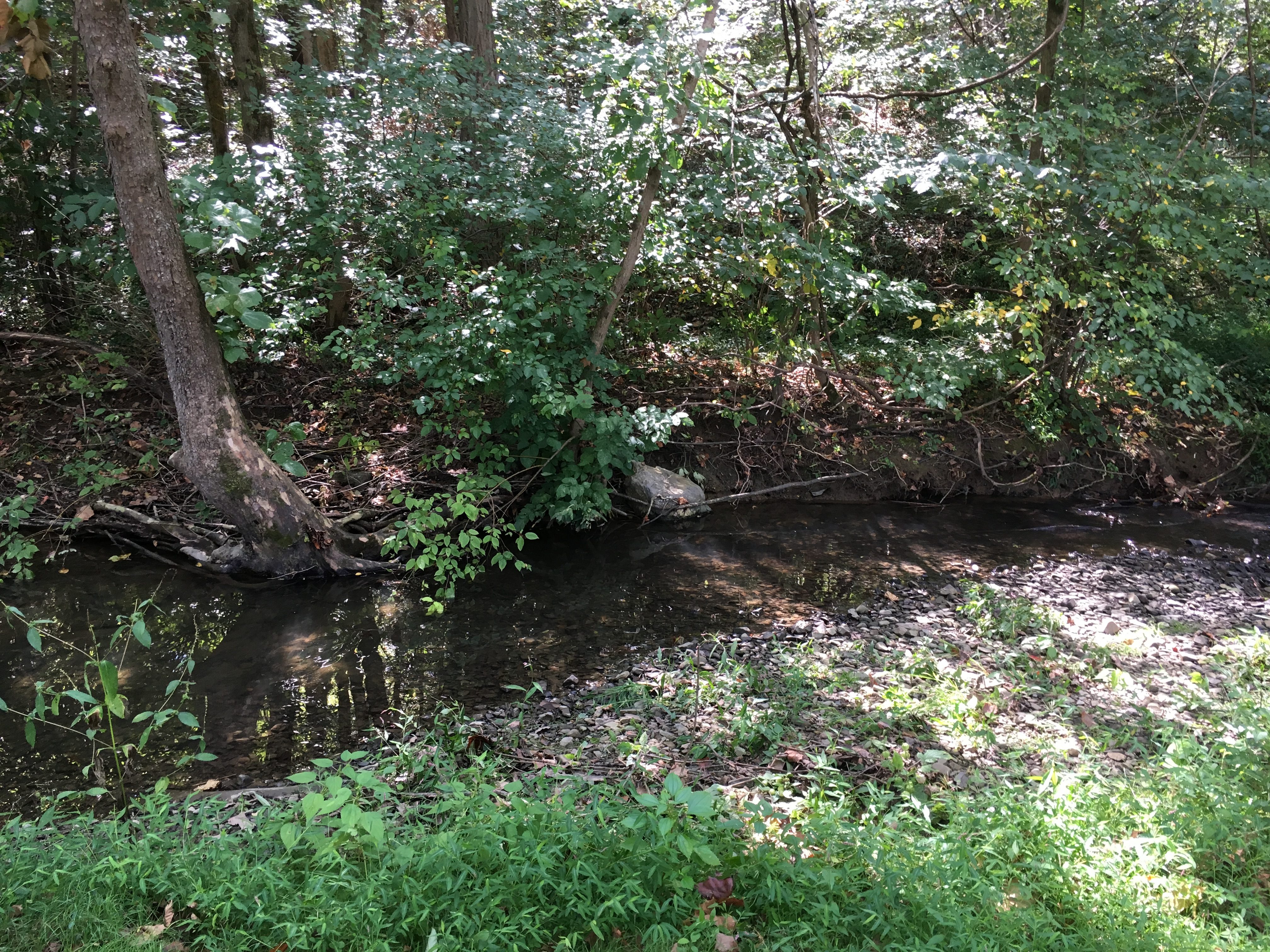
I hear Sycamore Tussock Moths caterpillars use silk strands to travel down branches. Very cool! But don’t think of touching them, they cause stings to occur.
Hi!
I think that it is so cool that you were able to see sycamore tussock moth caterpillar in the creek during your first sit-spot observation. If you ever go back there in the spring, hopefully you be able to see them change forms :).